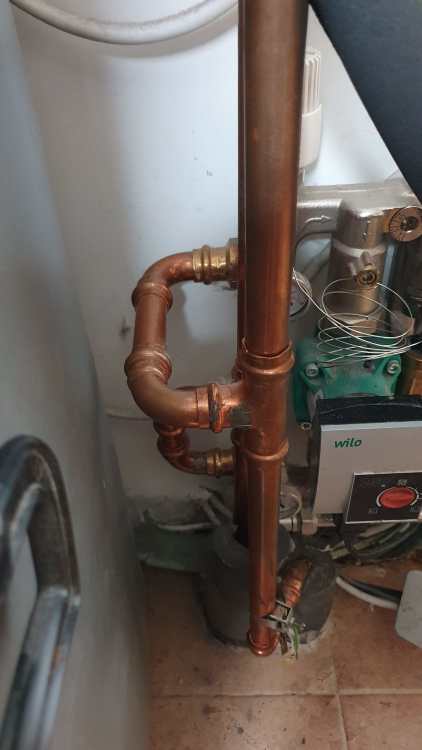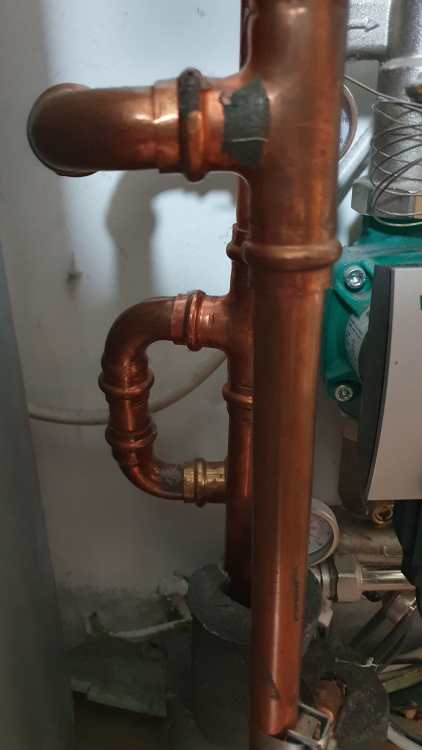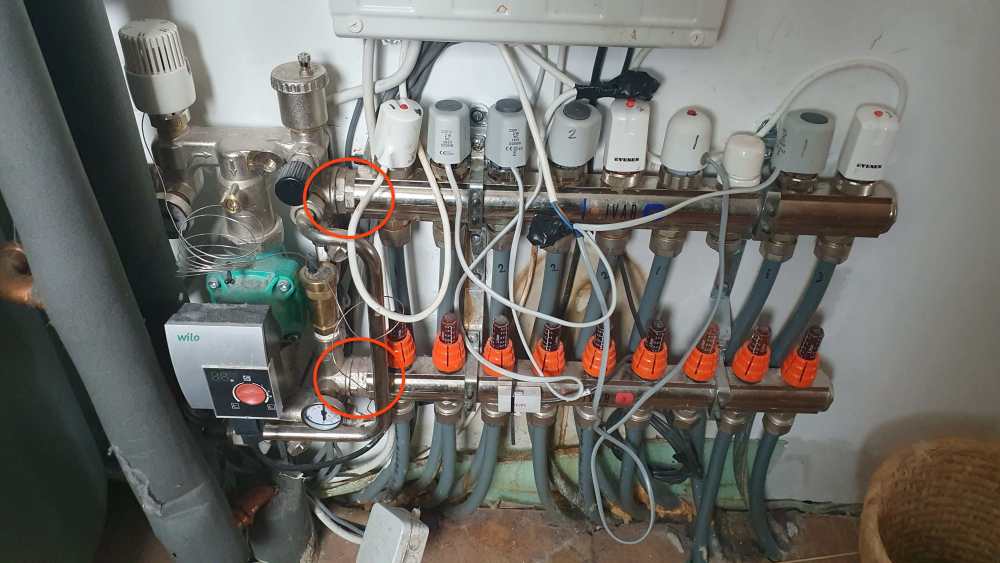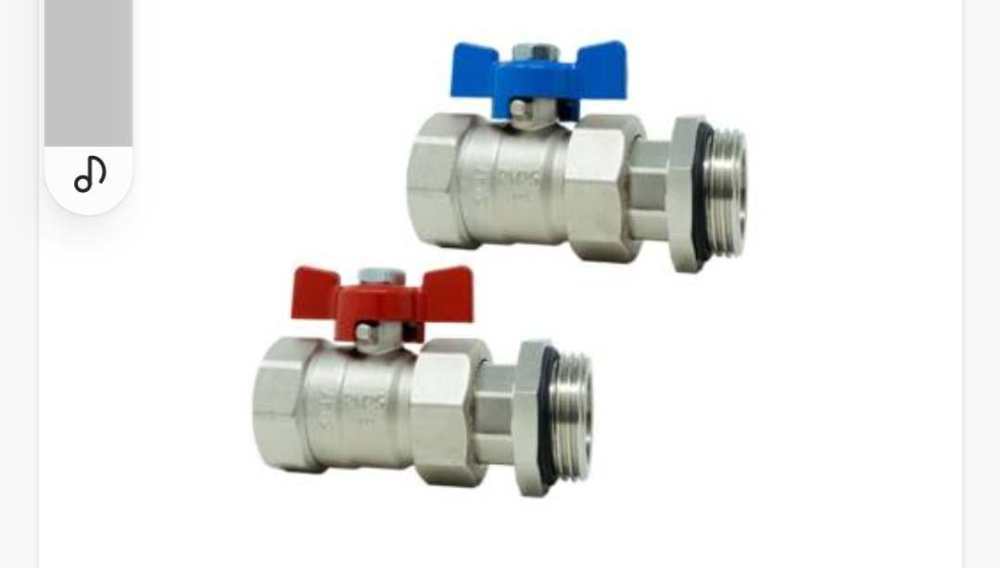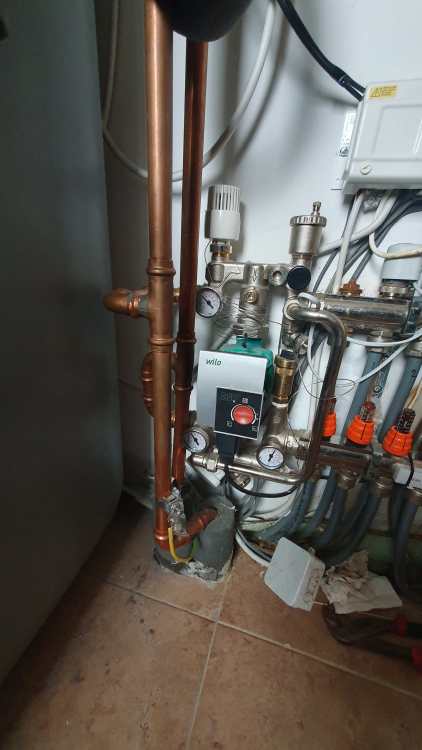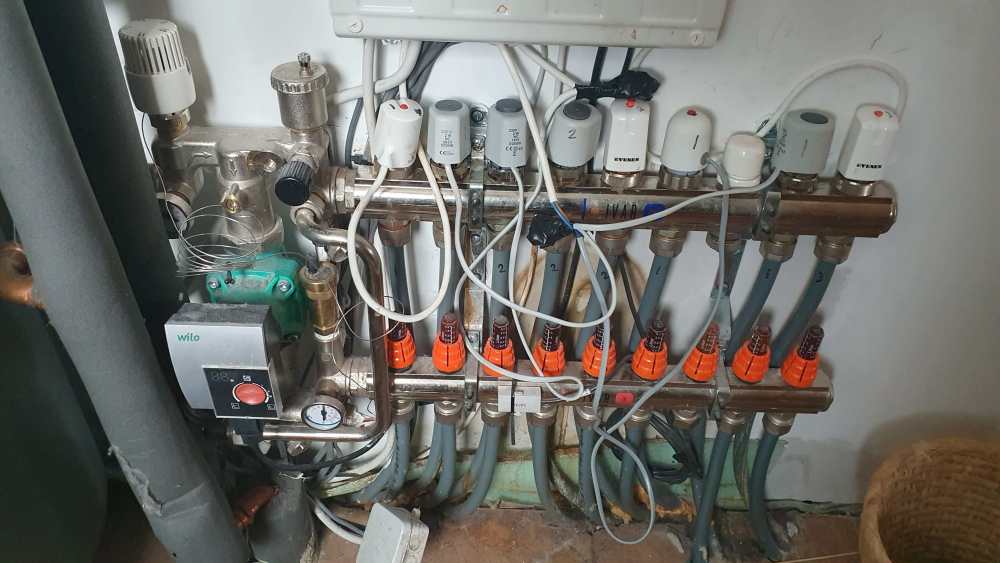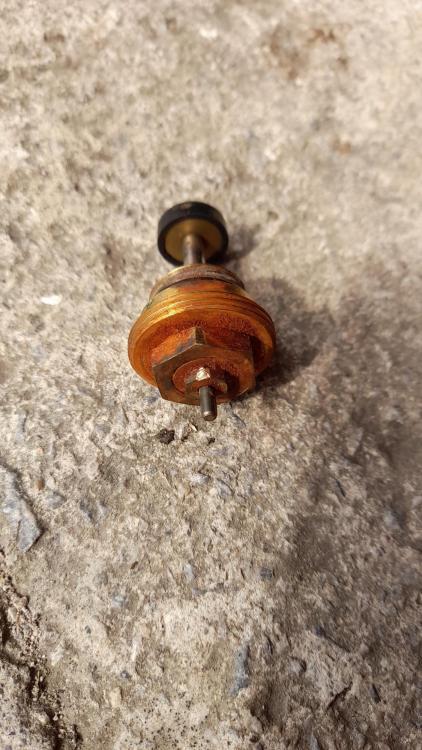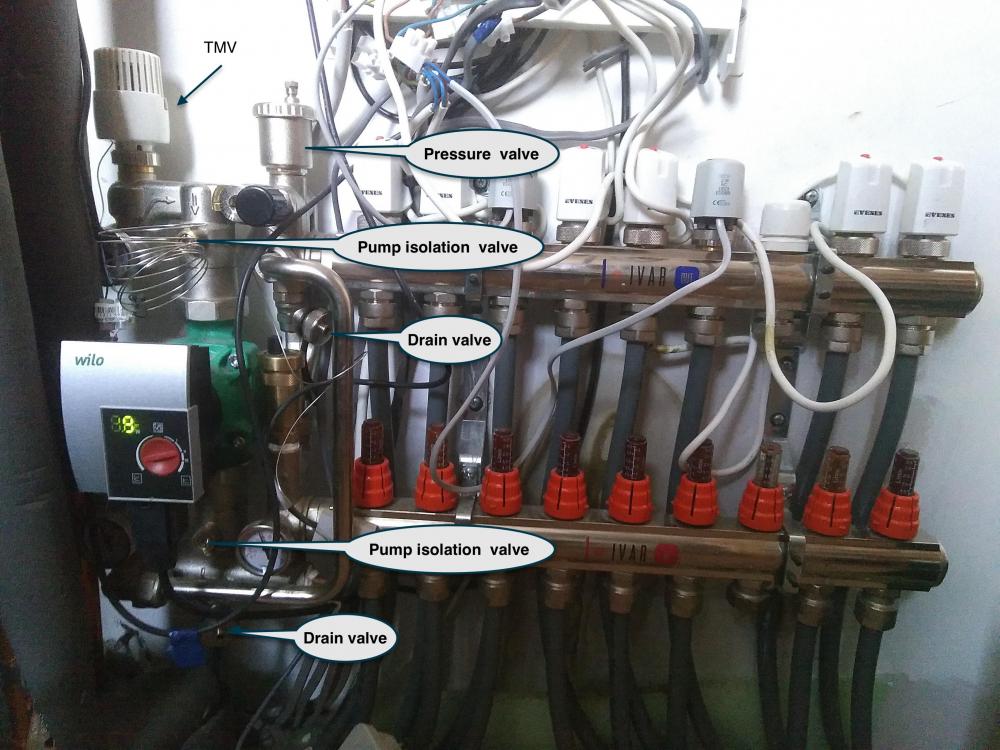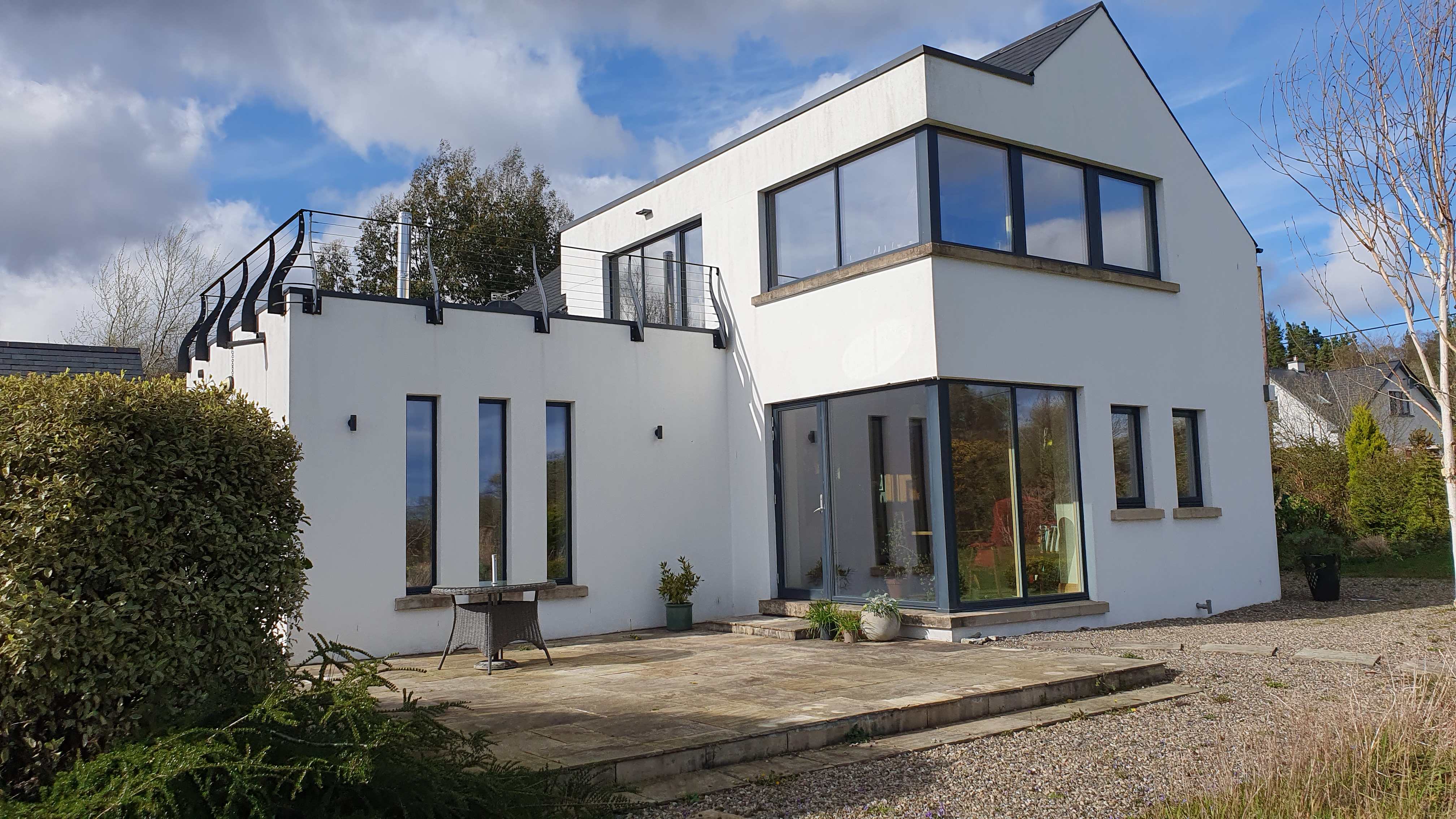
joeirish
Members-
Posts
48 -
Joined
-
Last visited
Everything posted by joeirish
-
Some more photos of my setup and some questions. The photos show a close up of how the flow and return pipes from the boiler are connected to the manifold. Soldered connection at the pipe and compression connection at the manifold. Would it be possible to take these two sections off and install the 1/4 turn valves on these then reattach everything? Thanks.
-
I'll probably get a proper plumber to put in the new isolators. It'll likely mean some level of draining of the system before any pipes are cut. I'm sure that I'll have a few more questions before it's finished. Thanks guys for the advice so far.
-
So why wait until May 4th? Regarding you initial suggestion I was thinking that I'd just cut sections out of the existing pipes and insert the four valves so to speak? My idea of moving the manifold right would mean new isolation valves would be inserted where I drew the red circles on the photo so they wouldn't be behind the copper pipes. Maybe I misunderstood what your thinking is?
-
I don't. I was only thinking yesterday that maybe I need some sort of filter. Recommendations?
-
Yes the mix is because I had a few pin valve failures and the rust buildup under the actuators meant that some had to be replaced. Mostly good now except for a couple of recent failures. No idea why these pin valves have failed but plenty of inhibitor in the system these days so maybe not enough originally.
-
Nick thanks again. What i had been wondering was if I could insert isolation valves where I indicated in the attached. It would mean moving the whole shebang a bit to the right and I'm not sure if there is enought spare UFH pipe for that? There is one unused connection for an extra ufh loop (visible third from right) that I wondered if this could be utilised to help with moving it all rightwards?
-
Thanks. I understand now.
-
Got it. Our posts crossed.
-
Thanks for that. 1/4 turns? Do you mean something like in the attached photo? And would I need some sort of drain down valves on the manifold also (youtube suggested this to de pressurise the manifold once its isolated and to remove air once it's re pressurised).
-
Thanks for the quick reply. Here's another photo with the insulation removed. The whole manifold etc is connected to the flow and return from the oil boiler. The pipes continue up to the thermal store. Essentially the system is installed so that there is no separation between the ufh part and the heating circuit from the boiler to the thermal store. I realise that there is probably a better design but I'm where I am unfortunately. And it has worked for the past ten years except for the occasional pin valve failure.
-
I've not been here for a few years cos everything's been fine. But now I have a return of an old problem and with plumbers here in Co. Clare been rarer than hens teeth I'm trying to sort this myself. Our manifold has no isolation valves. One of the pin valves needs replacing but I don't know how to do this without isolation valves. So my thoughts are to install isolation valves etc so that I can do do any future work myself. Attached is a photo of my manifold. Any help appreciated. Thanks Joe
-
Finishing breathable membrane around door and windows
joeirish posted a topic in Garages & Workshops
So I've been building a garden office and need some advice on how to finish the breathable membrane around door and windows. I've now seen e different methods. An X cut out with the membrane then folded into the building on all four sides of the opening. An 'I' cut out with just the sides folded in and the flush edges taped at the top and bottom. And thirdly a flush cut out with the bottom edges under the fill taped and sealed then the other edges taped directly onto the window frame after it is securely attached. This last one to avoid dampness creeping into the inside under the membrane. Would appreciate views on which is the best method. Thanks. -
Exactly my problem. In my case for all the widow openings as well as the door. I found this interesting video online which gives a different viewpoint to others I've seen https://youtube.com/channel/UCRKjjDhP3w2lnx3csu3G3aw or look for DIYfferent on YouTube. I'd be interested in other views on this.
-
Nothing on Donedeal. So any advice on making my own insulated roof panels?
-
Thanks. Unfortunately the lead time on insulated panels is over 2 months (I live in Ireland) or excessive delivery costs if I buy from UK and even then all sorts of potential issues becasue of Brexit. I need to get the roof on in the next couple of weeks to protect the rest from rain. So I was kind of thinking could I just make my own insulated panels. I can get the cladding in the next couple of weeks and the PIR is readily available.
-
I am building a garden office and will be using box profile cladding for the external roof covering. I was thinking of putting this over a warm roof but I was wondering if I needed the outer layer of osb or could the cladding be laid directly over the PIR (possibly glued on using something like Soudatherm Roof 250?). Unlikely there would be any foot traffic on the roof. It will be 4m wide by 3.5m deep. The cladding will be a single sheet the full depth of the roof. Thanks
-
Thanks for the reply. I smelled the inhibitor he had with him and it dedeinfeletly had a smell as did the fluid that came out of the system when he was changing the pin valve. I wondered about the iron in the water but we had our well water tested a while ago and the amount of iron in it is quite low (Iron,Total 15 ug/l. PV Value 200 µg/l). However there is high alkalinity so maybe this is an issue? I'm afraid it was myslef who marked up the photo. That was a mistake I now see that the pressure valve should be labelled differently/correctly.
-
And this is the ufh underfloor piping that was used https://shop.ivt-group.com/de-de/prineto-flächenheizrohr-stabil-16x2-0-pe-s-al-pe-878311442 The description when translated says "Multi-layer composite pipe PE-S / Al / PE-RT, inliner made of self-crosslinking polyethylene, oxygen-tight by means of aluminum sheathing, top layer made of polyethylene with increased temperature resistance, for use in surface heating according to application class 4, compression with brass-colored sliding sleeve 16 "
-
Yes that's been done. In fact the testing showed it to be really good water, not too hard and not too soft with no iron or other metals. Tastes wonderful too! My plumber wondered if there was some sort of electrolysis going on. The unf fluid circulates through the boiler which is steel and then trhough copper pipes and then throught stainless steel coil in the thermal store. The ufh pipes I believe are lined with plastic so should not effect things.
-
Just taken a photo of the pin valve that my plumber replaced yesterday in case anybody has any thoughts.
-
I did wonder about upgrading/renewing the manifold. I think I had to replace one valve twice but the others only once so far. Everything was fine for the first couple of years (not sure exactly when this frist happened!) then the first valve started leaking. I live in Clare but would be interested in hearing your recommendations.
-
We have a well which is fairly neutral, kettle doesn't fur up that much. I suspect that something is building up and wearing down the sealing rings.What type of residue to you mean. My plumber's most recent fix has been to deal with possible eletrolysis. We had copper pipes going to and from the boiler and stainless steel coil in the thermal store. So he has put some plastic piping in the circuit to see if that will break up the electrolysis, if that is what's causing this residue.
-
Thanks for the reply. The manifold is by Ivar (https://www.ivar-group.com/en/UK/products/Manifolds-8524). Attached is a photo. The pressure only drops when the valves are leaking. Otherwise holds steady at about 1.5 bar. The plumber checked the fluid today when he was changing the valve and said there was "industrial amounts of inhibitor" judging by what came out and the smell!
-
I've had my UFH system in and running for six years now. Today I once again had to replace one of the valves (the ones under the actuator). I have eight valves in total on the manifold and over the years I have so far had to replace six of these. Basically what happens is that the valve starts leaking when the actuator is in the down position. Rusty water comes out around the pin at the top of the valve. My plumber has no idea why this is happening. There is plenty of inhibitor in the system. Just wondering if anybody had any ideas?
-
Hi, I hope this is the correct forum but if not maybe a mod could move this post. I have a problem with the overhang on a couple of my window and door openings. Basically rain water gathers on the outside edge of the overhang and drips onto the cill causing it to discolour and in fact eaating away at the edge (it is a sndstone composite cill). It also causes the cill to become discoloured. There is an external door under the window which has the same issue and there is normally small drip just as you walk out the door. I've attached a photo sowing the situation. So I was wondering if I could attach some sort of aluminium lip to deflect the drips away from the overhang or is there some other solution? One of my issues when searching online is that I'm not sure if I ma using the correct terminology (overhang?) or what the name of the deflector is so that I can find a supplier. Thanks.

